Jonathan Ellsworth
5’10”, 175 lbs. I generally wear a size Medium for looser / relaxed-fit items, or size Large for more slim-fitting pieces. (see Bio)
I generally ski in drier climates, so breathability is more of a concern for me than full-on, wet-weather protection. And I don’t tend to run cold, so I don’t generally have to opt for thicker / heavier layers to stay warm.
SKI TOURING (New Mexico, Colorado, New Zealand, Argentina, etc.)
Base Layers
• Top: Mons Royale Checklist Hood LS
This has been my go-to touring top for several years now. It’s thin enough to work well as a high-output top, and its thin built-in hood is super effective for blocking sun and wind. Note that this top does have a slim fit, so at 5’10, ~175 lbs, I prefer the Checklist in a size Large, while I prefer a Medium for the more relaxed-fit Mons Yotei Powder Hood (see below).

• Bottom:
In very warm spring temps (55+ degrees F on the mountain), I’ll go with SAXX Kinetic boxer briefs.
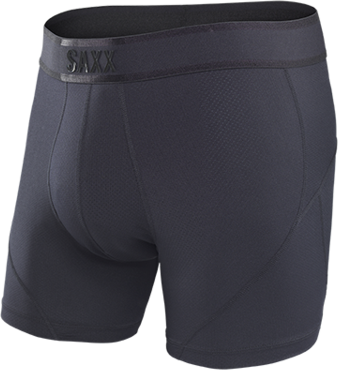
But in anything colder or in more variable temps, I opt for compression tights, and for working with ski boots, I really need a ¾ length rather than a full length. I’ve had good success with the SKINS A400 Compression 3/4 Tights. I’m also hoping to review their ski-specific DNAmic Thermal Men’s Compression ¾ Tights this season. Basically, for anyone who tends to experience minor (or major) knee pain while skiing, it might be worth checking out compression tights if you haven’t used them before. And the other thing I like about them is that I can easily slide over them a knee brace for those times during a season where I’ve tweaked a knee.
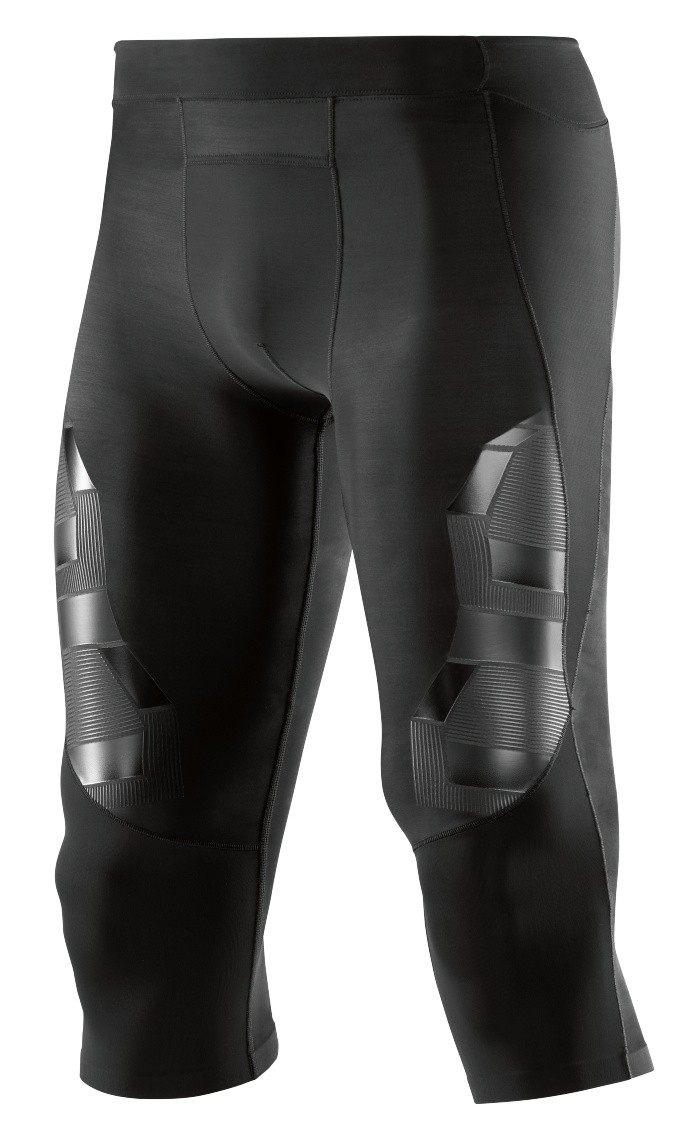
Mid Layer 1: Stio Men’s Gannett Peak Hooded Jacket
For really warm-weather spring and summer tours, the Gannett is a simple, straightforward hoodie that I throw in my pack in temps ranging from 50 degrees F on up. If the wind picks up, I can throw it on on the way up, and I’ll always put it on at the summit. There is not a ton of insulation here, which is precisely what I want in this context. It’s also a piece that I’ve been wearing more and more for running in high-40s / low-50s F temps.
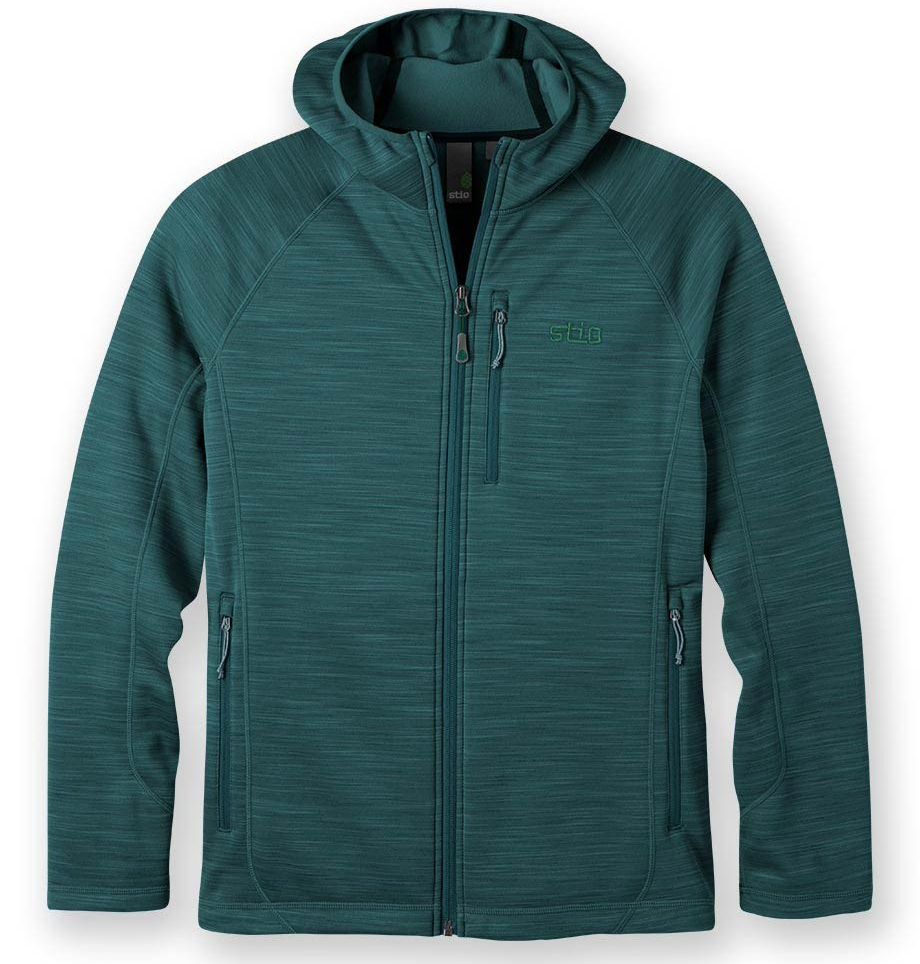
Mid Layer 2: Westcomb Ozone Hoody
This is my most versatile mid layer, and I cannot say enough good things about the Ozone. I run in it, bike in it, lounge in it, and ski in it. And I’ve got about 5 years and probably 500+ days in my particular Ozone Hoody.
It’s a bit warmer than the Stio Gannett, but I can still get away with wearing it on warmer-weather days (where the Gannett is all that would be needed), but it is far more useful as temps drop down closer to freezing — it does the trick so long as I’m not spending a lot of time just standing around. In general, I’d say that I’m bringing the Ozone with me when temps are ranging between 35 – 50 degrees F.
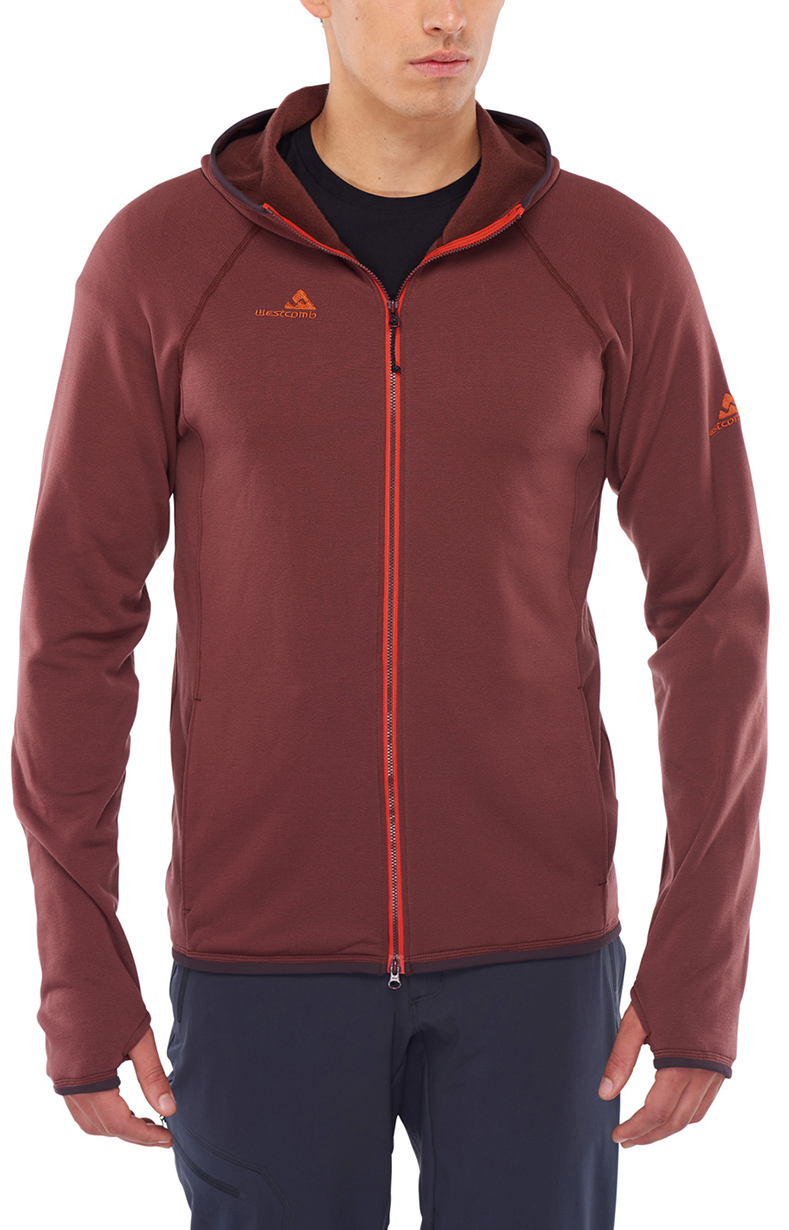
Mid Layer 3: Patagonia Nano-Air Jacket
This is my go-to when the temps are topping out around 45 degrees F, and then any temps below that. Those touring in much colder temps will probably want something warmer for the coldest days, but this works perfectly for me, and on really cold days, I can layer more heavily beneath my size-Large Nano-Air.
Note: for touring and inbounds skiing, I much prefer the non-hooded version of the Nano-Air; your mileage may vary, but I find the hooded version won’t lay flat beneath a shell. So if I need a hood, I rely on the built-in hoods of my base layers or my shell. (That said, when I’m not layering the Nano-Air beneath a shell, I do love the hooded version for hiking, belaying, etc.)
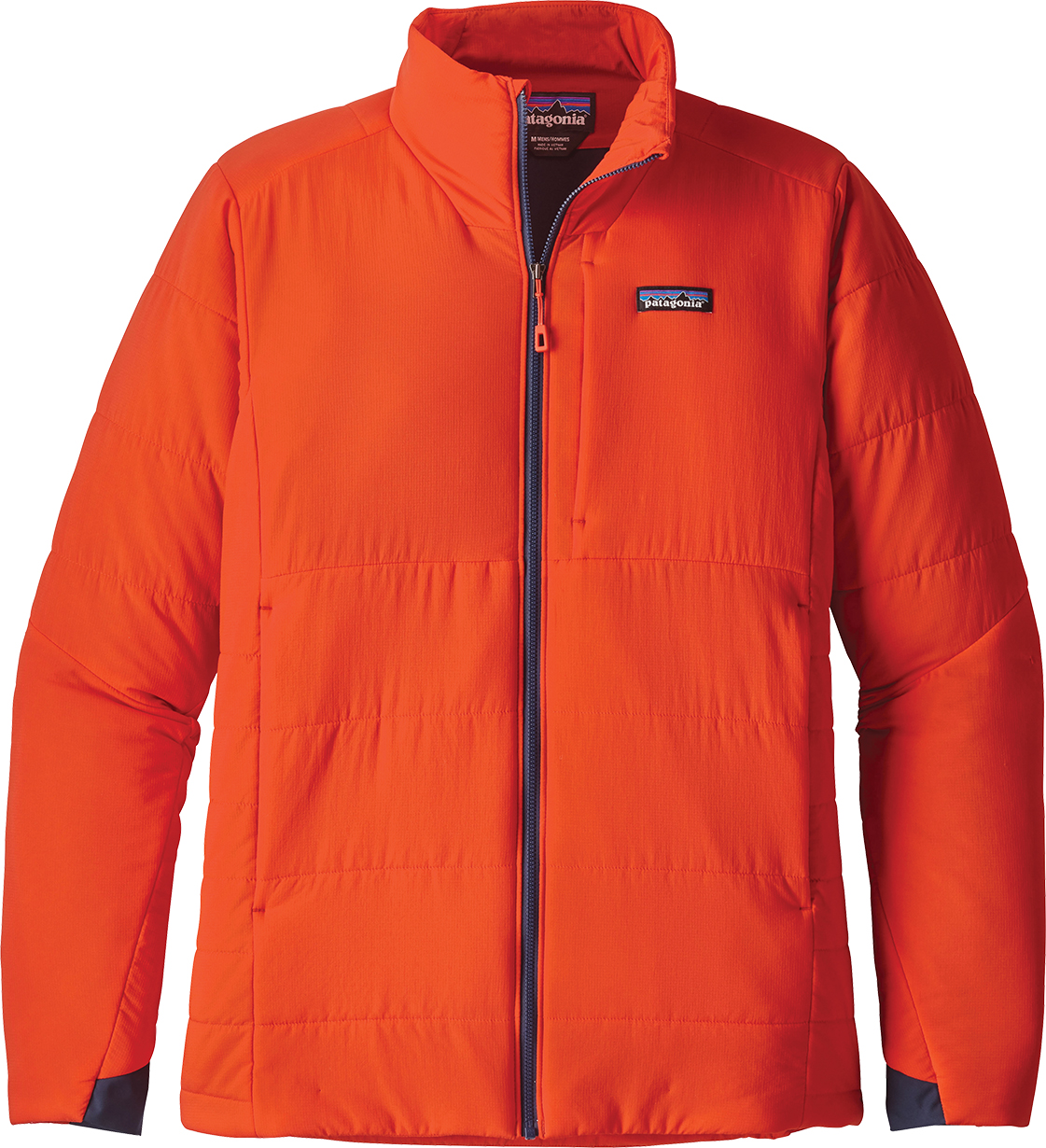
Shell
• Jacket: Flylow Genius & Strafe Cham2 Jacket
Both jackets are made with Polartec NeoShell, and both are excellent. The Cham 2.0 has a stash pocket inside, but other than that, these jackets have a similar feature set. They’re both terrific.
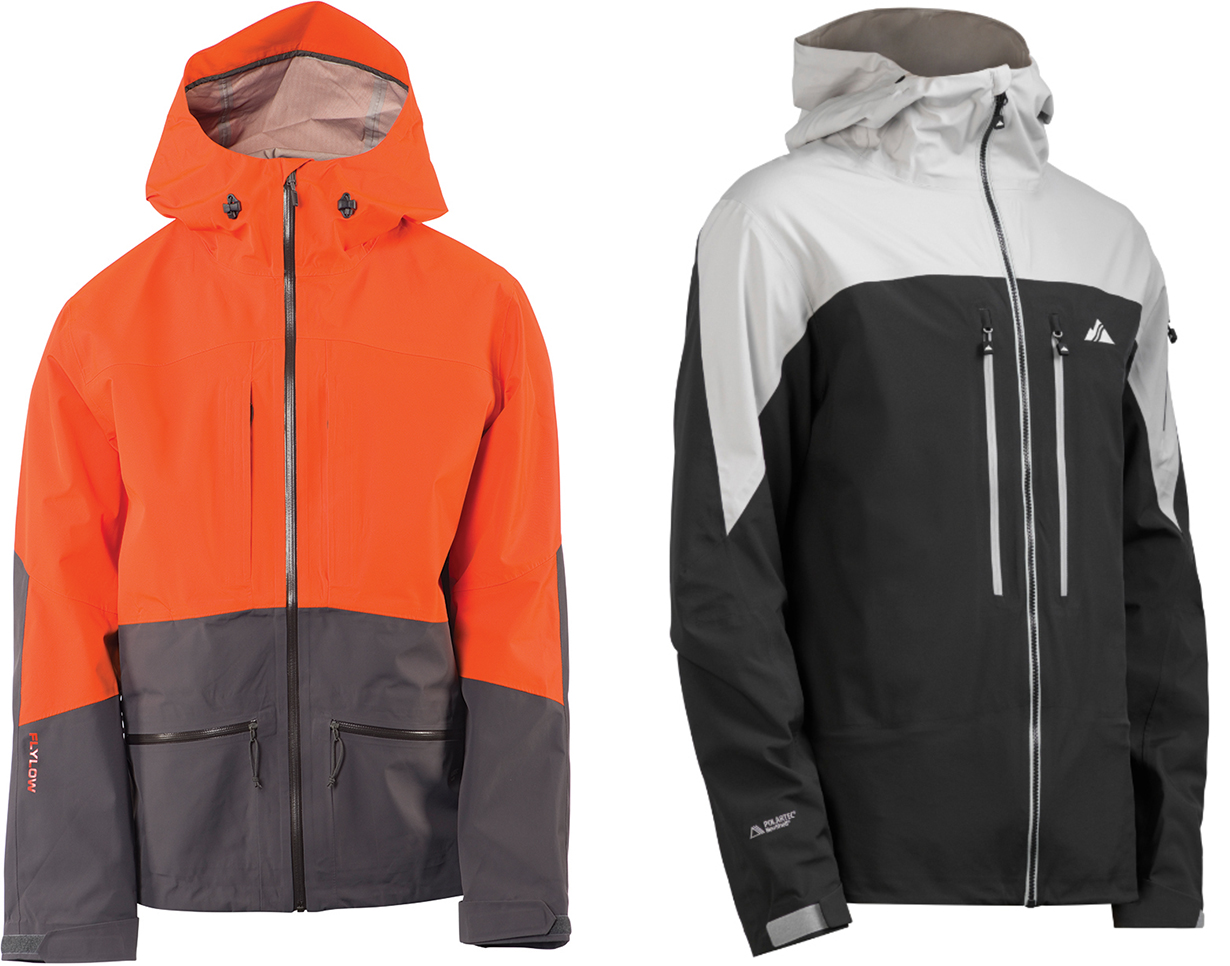
• Pants: Flylow IQ Pants
Love these. They’ve got a slightly-looser fit (I wear mine in a size Large because I hate skiing in skinny pants), and they are made with a lightweight face fabric and Polartec NeoShell membrane. If durability is a big concern you’ll want a thicker fabric, but for touring, these are ideal.
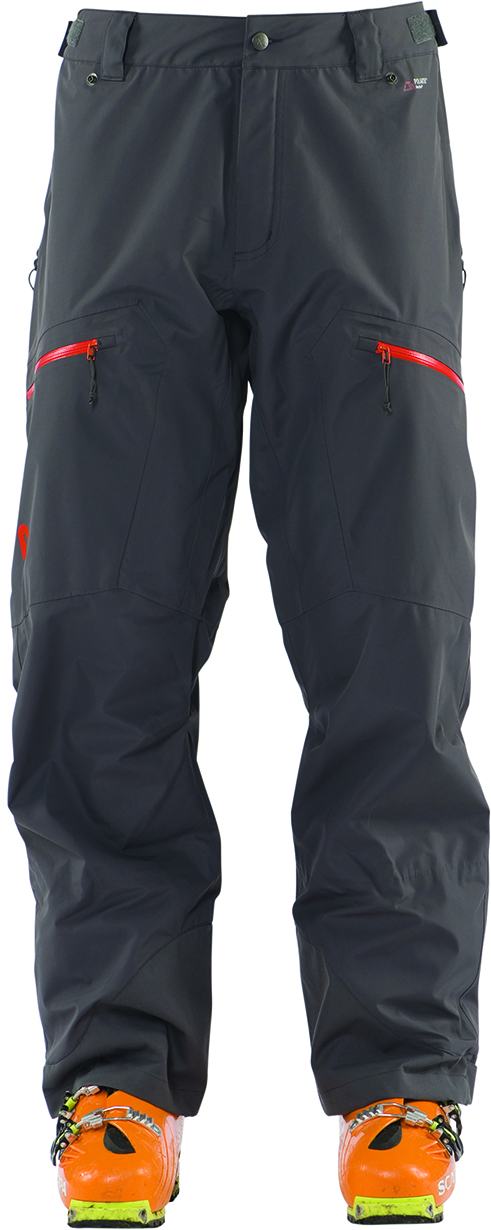
Gloves:
In moderate-to-very-warm temps, I like a thin, very breathable, not-that-warm glove for the way up, and I currently don’t have a clear go-to glove for this. So I’m on the lookout for this product.
But for moderate-to-cold temps, I love the Hestra Ergo Grip Active. It’s a thin, close-fitting glove with a leather palm, and a stretchy, windproof / breathable fabric on the back of the hand. In warm weather (when I’ll skin up in a very thin glove or no glove) I’ll put these on when it’s time to ski down. And in moderate-to-cold temps, I wear these while skinning up, then swap them out at the top for the warmer Hestra Leather Fall Line to ski down.
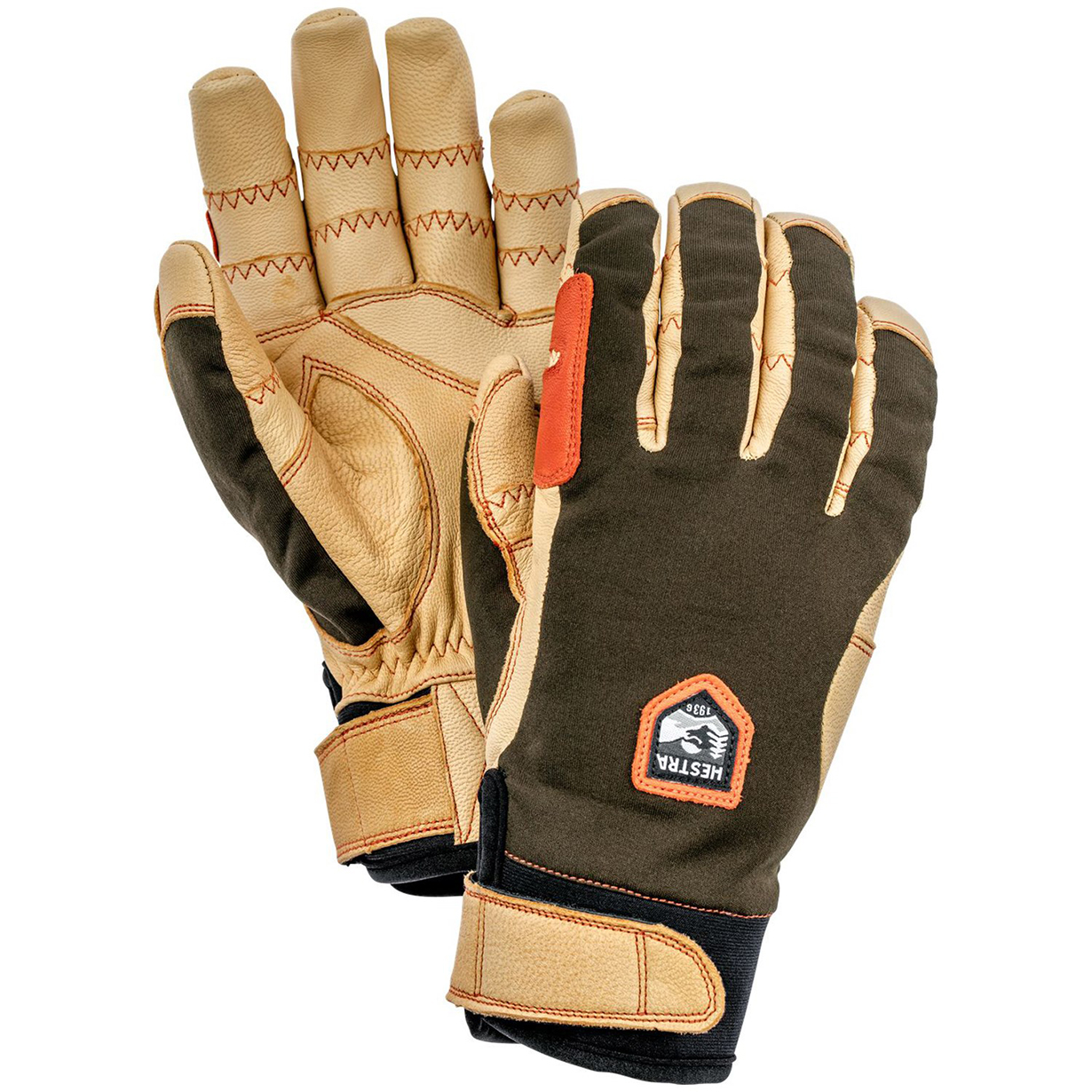
Socks: Bridgedale MerinoFusion SKI Vertige Light
For inbounds skiing with very tight boots, I prefer extremely thin socks. But for touring, these Bridgedales are perfect for me. They are still thin (just not as thin as my choices below for inbounds use), but I’ve found the Vertige Light to be effective for minimizing blisters on my heels on the skin up (especially since I’m fairly often skinning in new boots and / or liners that I’m reviewing). And they’ve held up extremely well — I’ve yet to put a hole in the one pair of these I have after three seasons of use.
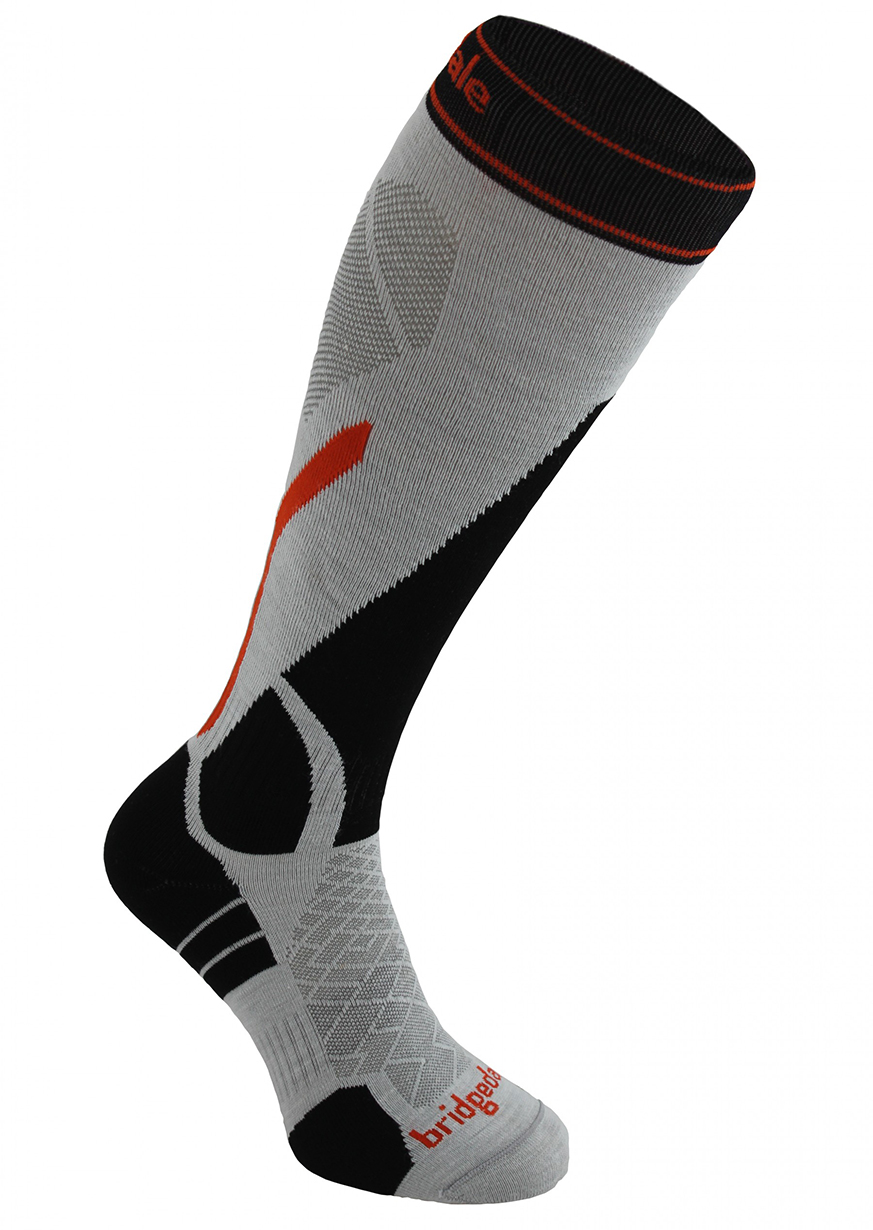
INBOUNDS SKIING
Base Layers
• Top: Mons Royale Yotei Powder Hood
I love this piece, and could easily grab it every single time I go skiing inbounds, whether in December or in late June. The built-in hood is very functional, its temperature range is huge (wear the same base layer, just change the mid layer). Love it.
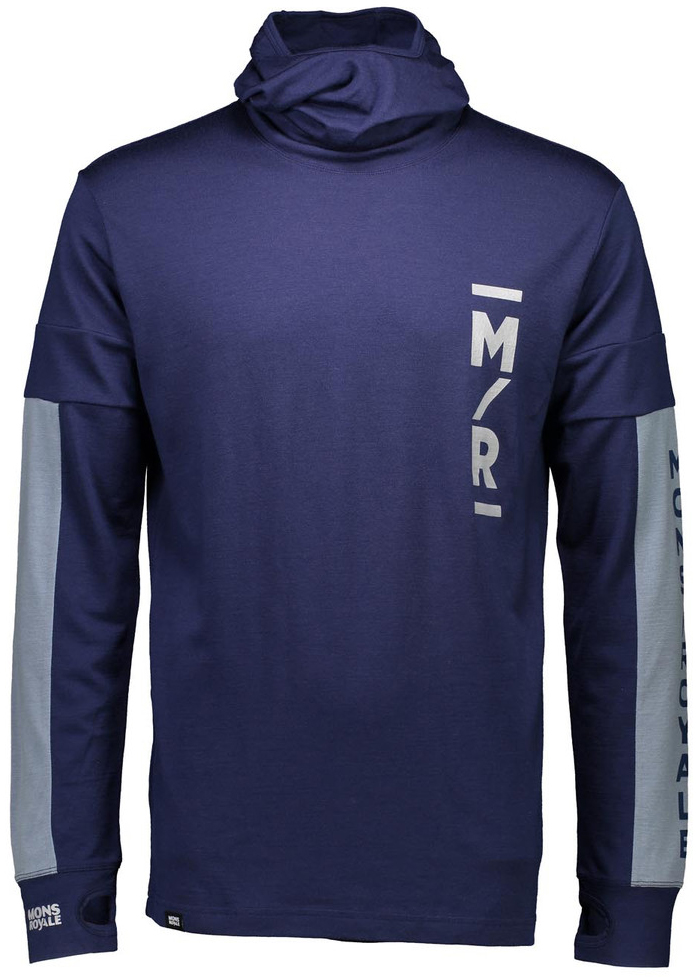
• Bottoms:
Same goes for what I wrote above for touring — SAXX Kinetic boxer briefs, or SKINS compression ¾ tights.
Mid Layer:
I typically just use one of the the 3 mid layers I named for ski touring, depending on how warm or cold the weather is.
Shell
• Jacket: Arc’teryx Sphene or Flylow Higgins
This is currently a tougher call for me, since Flylow changed up their Lab Coat 2.0 quite a bit (the new Lab Coat is good, but it’s a bit more 50/50 or touring oriented). I end up hiking a lot when I’m skiing inbounds, so breathability matters, and a heavy inbounds coat gets too hot quite quickly. So given all that, I’ll either go with the excellent Arc’teryx Sphene (it’s light and offers excellent weather protection, it just doesn’t have all the pockets that I tend to make use of when skiing inbounds).
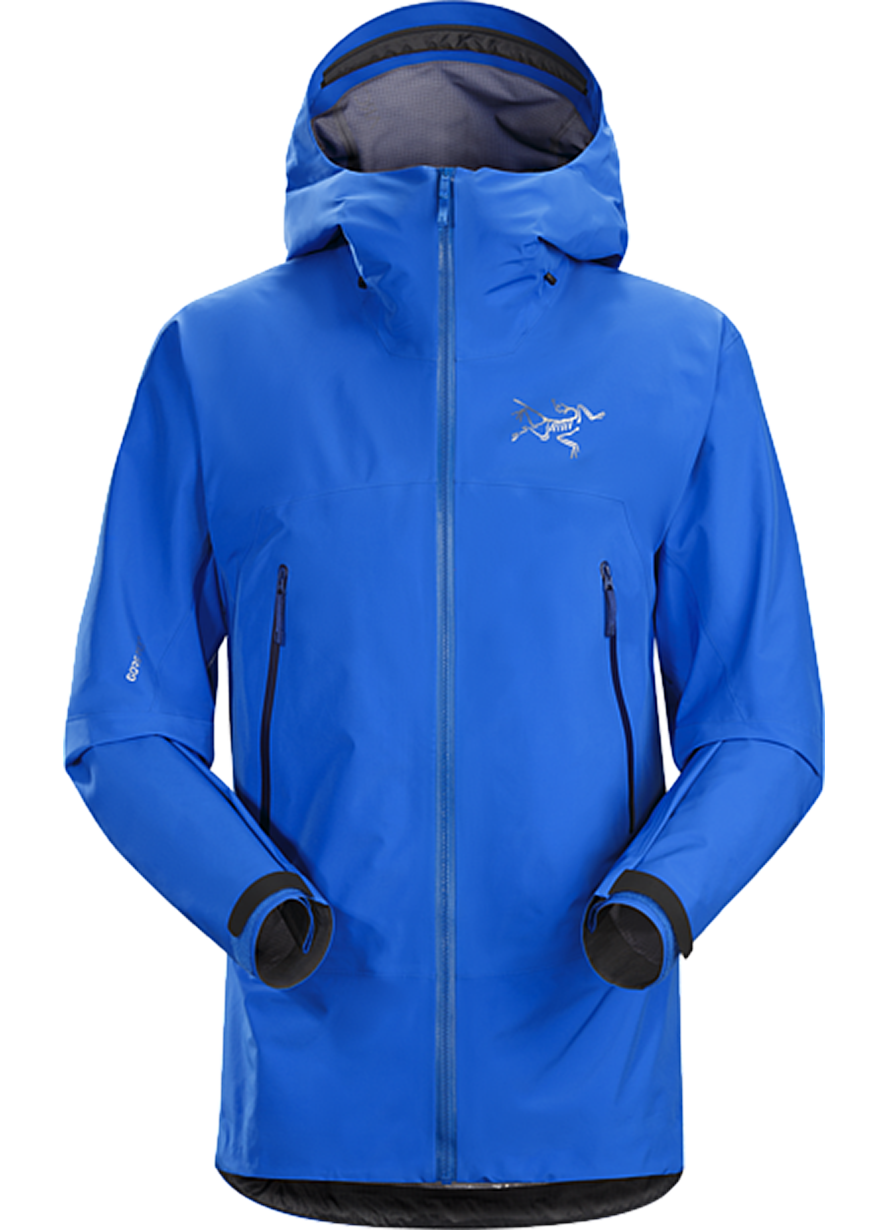
On the flip, I could quite happily go with the Flylow Higgins — this jacket is a great value, it’s durable, and it’s got all the pockets. It’s heavier than the Sphene, but it costs a lot less.
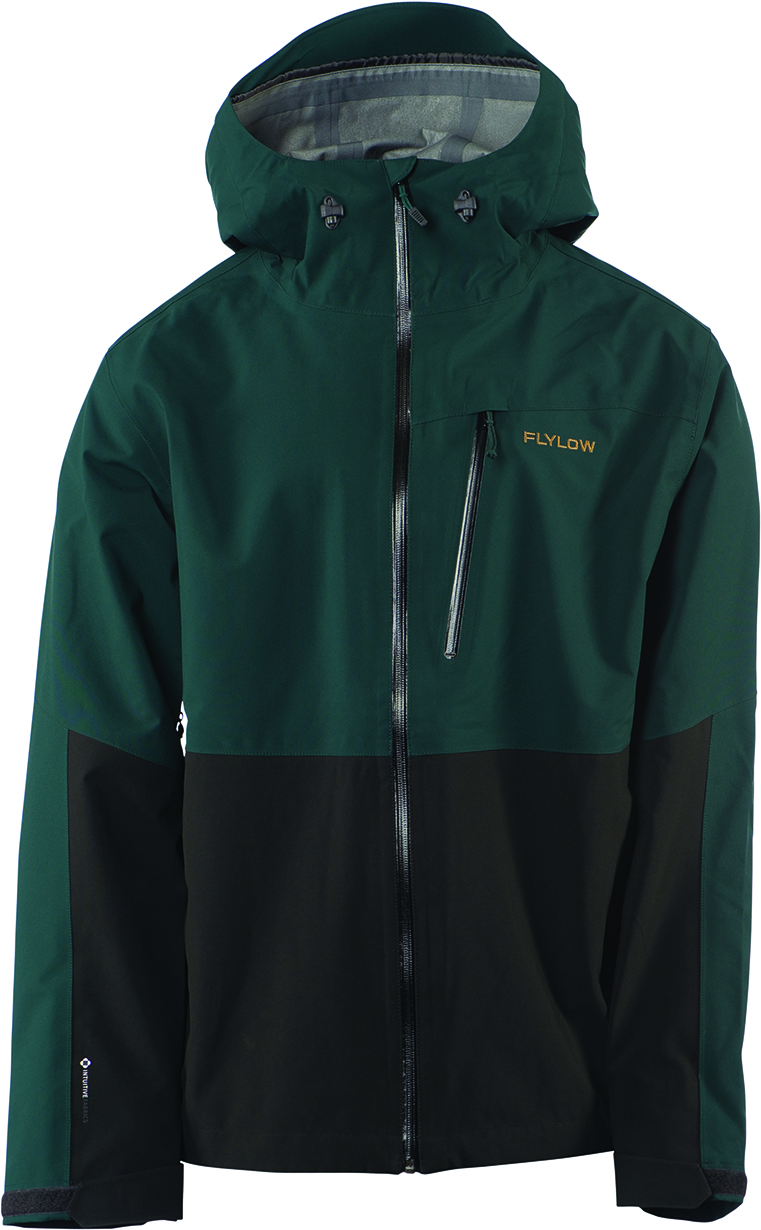
Last thing: on brutally cold days — the kind I find myself in just a few days a season, I’ll break out the Arc’teryx Fissile Jacket for maximum warmth. It’s overkill for me most of the time, but it’s an incredibly nice insulated coat that I would wear more if I frequently skied in temps way below 0 degrees F, and that I always very grateful for on “those” days.
• Pants: Arc’teryx Sabre
Love love love these, and I have for a number of years now. Outstanding pockets, great vents, good weather protection. I wear these in a size Large, and they are admittedly pretty long and have a pretty huge waist, but I like the room to move. (FWIW, a size-Large Sabre pant runs much bigger than the size-Large Flylow IQ pants, and for the more apples-to-apples fit, you’d need to go Large in the IQ and medium in the Sabre.)
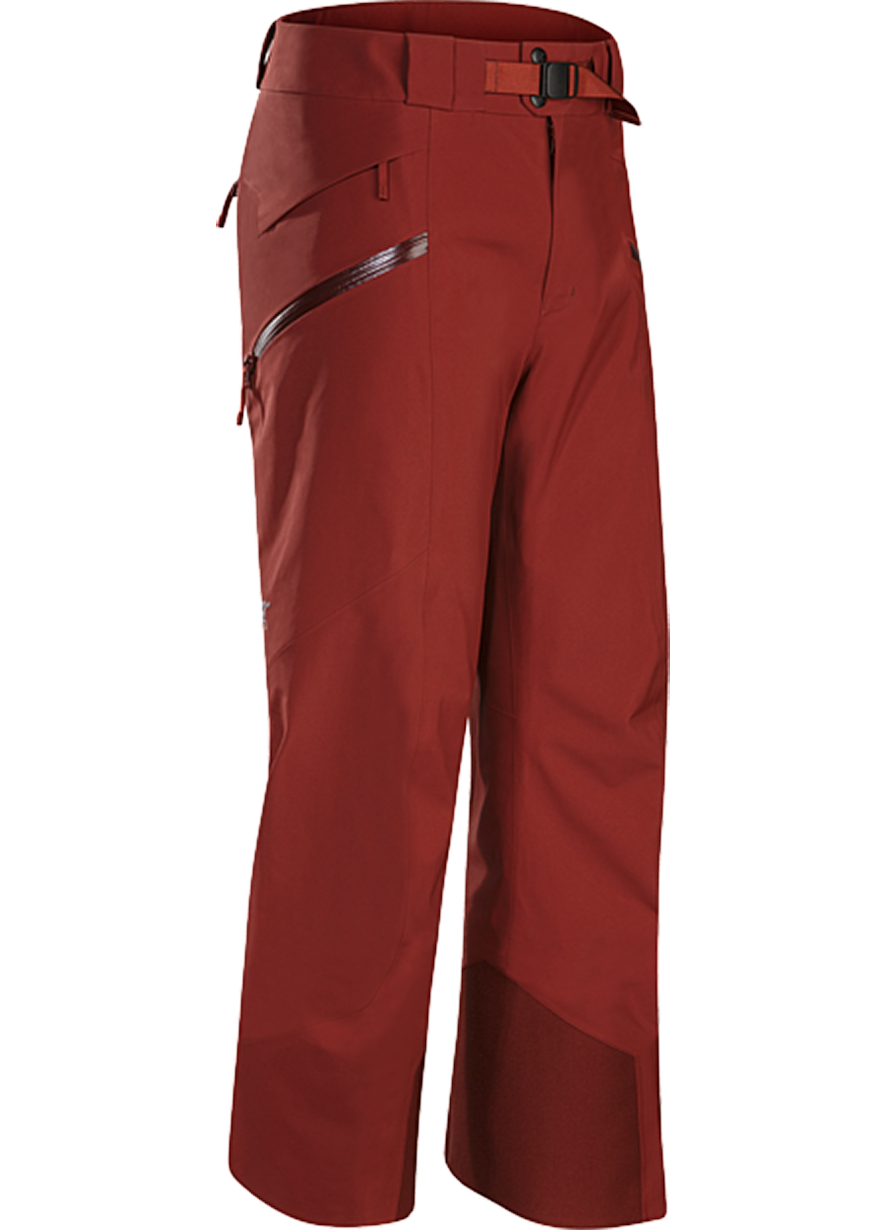
Gloves: Hestra Leather Fall Line
While some people might want a warmer glove for brutally-cold days, I still typically wear these on days when the temps are at or below 0 degrees F, and I wear them all the way up to temps in the low-50s. When it gets warmer than that, then I currently switch over to the Hestra Ergo Grip Active gloves.
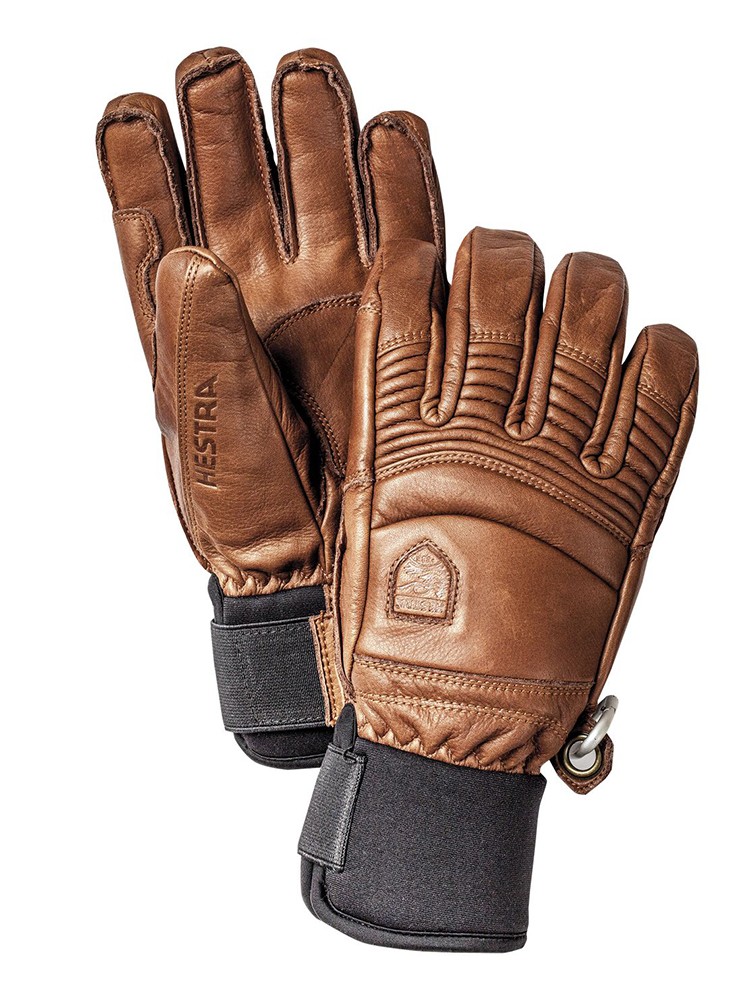
Socks: Bridgedale MerinoFusion SKI Ultra Fit
Give me thin. Very thin. Since I prefer a pretty tight boot shell fit, I basically want to go with the thinnest socks I can find, and for the past several seasons, that has been the Bridgedale MerinoFusion SKI Ultra Fit. I am passionate about these. But (depending on the boot or liner I’m testing), I can sometimes go with — and can recommend — a slightly thicker sock, like the Smartwool PhD Ski Ultralight, which is slightly thicker, but will give you a bump up in durability — if you have the room in your boots to accommodate.
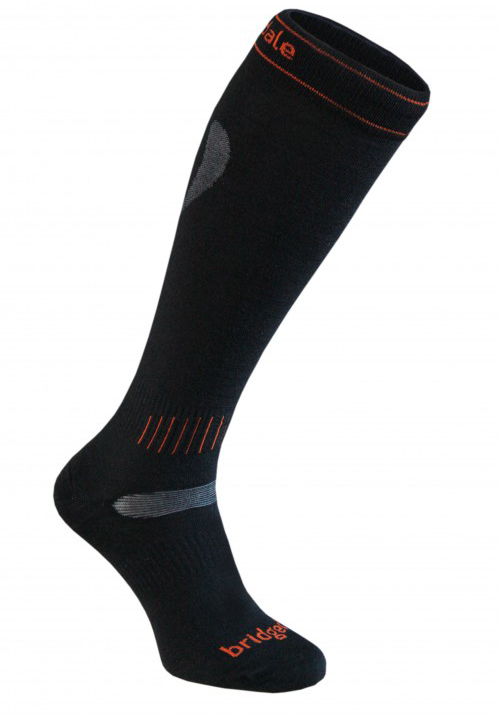
ONE KIT FOR TOURING + RESORT
Like our 1-ski quiver selections, if I had to really pick a single piece for all of the categories, I could, and it would look like this:
Base Layers
• Top: Mons Royale Yotei Powder Hood

• Bottom: SKINS Compression ¾ Tights

Mid Layer: Patagonia Nano-Air Jacket
I’ll miss my other options on the warmest days, but if I can only choose one, it’s still quite versatile while also working for me best in cold temps.

Shell
• Jacket: Arc’teryx Sphene
For touring + lift-lapping in any and all conditions (super cold; consistent rain; dumping snow; warm and bluebird) I could wear this jacket all the time and just layer differently depending on the day.

• Pants: Arc’teryx Sabre
Because when I am storm skiing — and sitting on chairlifts — the IQ pants will be quicker to wet out than the Sabre will.

Gloves: Hestra Fall Line

Socks: Smartwool PhD Ski Ultralight
If I can only have one pair of socks for both touring and inbounds skiing, the Smartwool is only slightly thicker than my ideal inbounds sock (Bridgedale Ultra Fit), and that additional thickness provides a bump in durability that’s useful given the wear and tear of touring.
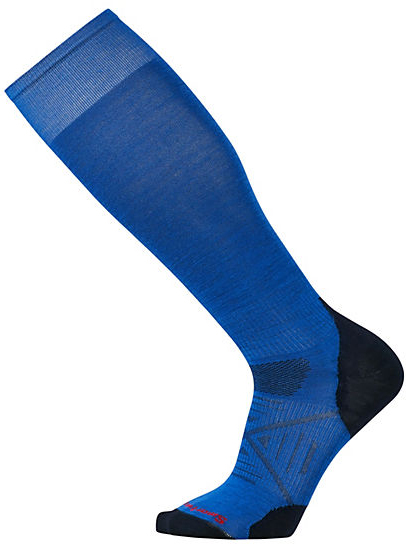
NEXT: Kristin Sinnott’s Outerwear and Apparel Selections

I enjoyed reading what you guys/Gals wear and why. I use similar pieces and you gave me some ideas on adding a couple, namely the Skins A400 3/4 compression tights. I have been using the CWX compression shorts the past few years along with neoprene knee braces, but I like the 3/4 length better.
I just bought the G-Form Pro-X compression shirt, I have a AC Separation on my left shoulder and a Labrum tear on my right shoulder from a Mountain Bike crash in September, so I have been looking for some form of protection that is not overly bulky and breathes decently.
Keep up the good work.
As someone who has been looking for replacements for his trusty, but kinda old and gross, Marker Spring Gloves – I share your pain JE – I’ve struggled finding good spring / touring gloves. For me not necessarily uphill – but something with the dexterity that works for errands around a cold and windy NYC, a fall tailgate, or for warmer days we seem to keep hitting on trips west to Utah. I’m intrigued not only by Luke’s description of the M1 Trucks – but also the free shipping and returns – not to mention the price! Fingers crossed. Happy Holidays!
For thinnish gloves,, I really like the OR Lodestar gloves. Unlike most gloves of similar thickness they don’t have any membrain.coating or insert.
This has two benefits:
First: breathability and drying time are best in class, so even if you get them wet from snow or sweat, they will dry fast.
Two, the fleece insulation is part of the outer fabric (back nylon and leather palm) so there are no separate layers sliding across each other, to reduce grip and dexterity.
Unlike many others they have a fairly weather resistant nylon back, water resistant Pittards leather palm and finger tips, and the leather is lined with a bonded fleece, where most palms are uninsulated.
Do all of you who ski-tour with an ultralight down jacket not worry that:
1: It will lose loft during the day due to moisture (at the very least from sweat in your clothing from the ascent, if not from snow)?
2: That you will rip those ultralight fabrics/seams if you wipe out, or ski through some trees/brush?